Social Awareness Teaching Resources
Help your students build social awareness skills with activities and printables, social skills worksheets and more SEL teaching resources created by teachers specifically for elementary and middle school students.
This collection is full of digital and printable activities created by the expert teachers of the Teach Starter team to help teachers as they work with students on being more socially aware, recognize social cues, understand social dynamics and treat the people around them with kindness and courtesy.
Each teaching resource in this social awareness teaching resource collection has undergone rigorous review by the Teach Starter team to ensure it's ready for the classroom ... and your students!
Curious about teaching social awareness and wondering how to build students' social skills? Read on for some tips from our expert teachers!
What Is Social Awareness? A Kid-Friendly Definition
Being socially aware is not something that comes naturally to every child, and explaining what social awareness means can be tough. Our teacher team has created this kid-friendly definition to help!
Social awareness is understanding how other people feel and what they need. When we are socially aware, we notice how others are doing, and we make an effort to be kind and helpful to them.
Social awareness also means paying attention to the rules and ways people behave in different situations.
Being socially aware means we are more sensitive to the feelings of people around us, and we can then use our social skills — such as the ability to be kind, to listen and to cooperate – to work with others. It means we can empathize with others, understand diverse perspectives and navigate social interactions effectively.
Social Awareness Examples for Kids
Now that you've explained the social awareness meaning, it helps to explore what it actually looks like when you put it into practice. Many of your students may have at least some skills already at hand — depending on the individual student and grade level.
A kindergartner, for example, may show empathy by giving a crying friend a hug or sharing a toy, but they're typically not yet able to understand that people have different perspectives.
So how can your students show they're socially aware? Let's look at some kid-friendly social awareness examples!
- Taking turns on the playground or at the water fountain.
- Sharing crayons or gluesticks with classmates.
- Making eye contact with friends when they're speaking.
- Paying attention when a teacher is speaking and not interrupting.
- Collaborating with classmates to complete a group assignment.
- Using conflict resolution skills to address issues with a friend.
- Offering to help the gym teacher put away the basketballs or helping the school librarian shelve the books that have been left out by other students.
What Is the Difference Between Self Awareness and Social Awareness?
We teach students both self awareness and social awareness in elementary and middle school, and the two relate to one another as important aspects of emotional intelligence.
But where social awareness is focused outward on the emotions, perspectives and needs of others, self awareness focuses inward on recognizing those concepts in oneself.
Social Awareness and Emotional Intelligence
Emotional intelligence is an umbrella term that involves a number of the core components of a social emotional learning curriculum — including self awareness, self management and relationship management, as well as social awareness.
So how does social awareness specifically tie back to emotional intelligence? Being emotionally intelligent involves not just recognizing emotions in one's self but in others — the basic component of social awareness for our students.
Take social dynamics, for example. Understanding the social dynamics at play in a particular situation is a big part of being socially aware. Recognizing group norms, cultural differences and power dynamics all help our students to avoid causing offense or discomfort in others. It's a great example of having the emotional intelligence required to navigate a situation!
- Plus Plan
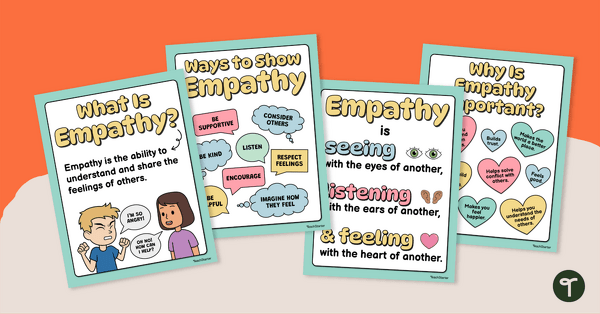
Empathy Poster Set
Enhance student understanding of empathy and why it is important with this set of 4 classroom posters.
- Plus Plan
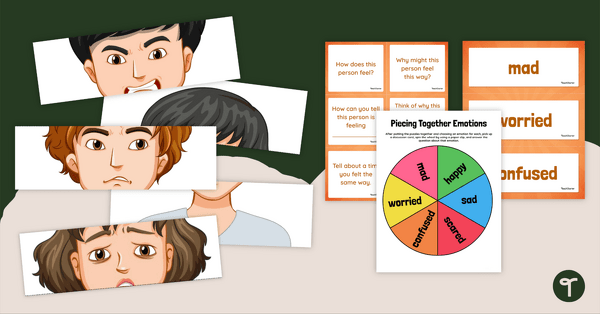
Piecing Together Emotions – Puzzle Activity
Guide your students to identify the feelings and emotions of others with this social emotional learning puzzle activity.
- Plus Plan
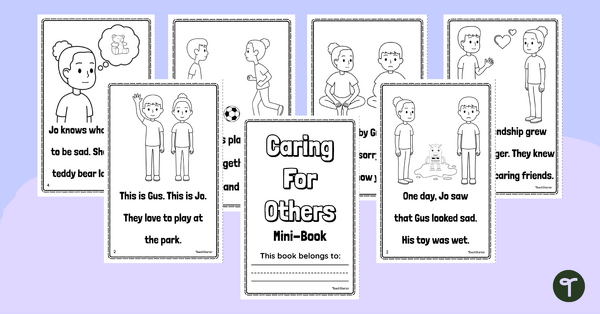
Caring for Others – Printable Empathy Book
Unlock the magic of empathy by giving your students a mini-book about how to connect, understand and make a difference through the simple act of caring.
- Plus Plan
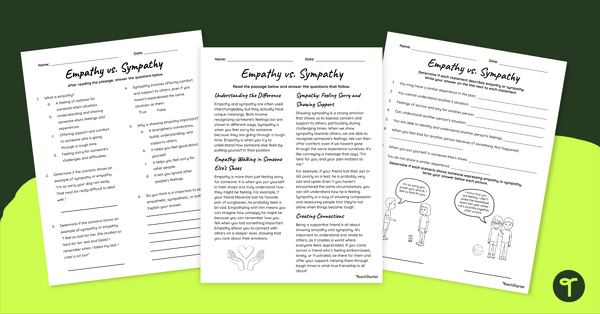
Empathy vs. Sympathy – 5th Grade Reading Comprehension Worksheet
Challenge your students to learn the differences between empathy and sympathy with this reading comprehension worksheet.
- Plus Plan
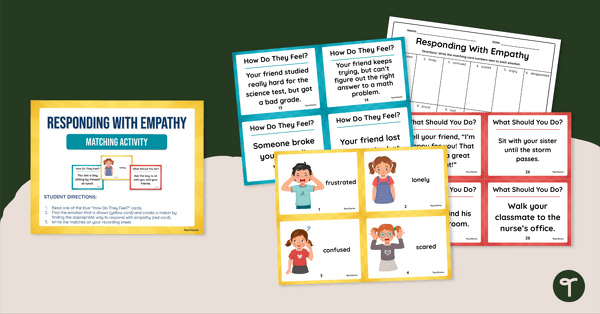
Responding With Empathy Matching Activity
Guide your students to identify emotions in others and select appropriate ways to respond with empathy with this matching activity.
- Plus Plan
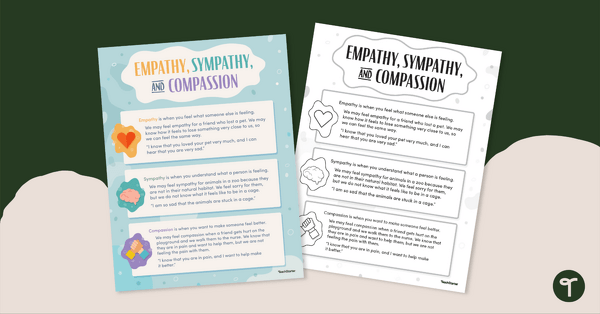
Empathy, Sympathy and Compassion Poster for the Classroom
Highlight the differences between empathy, sympathy and compassion with this printable poster.
- Plus Plan
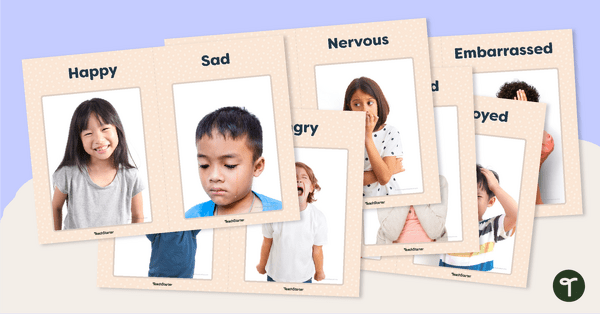
Recognizing Feelings - Flashcards
Improve your students' emotional literacy with this set of feelings flashcards.
- Plus Plan
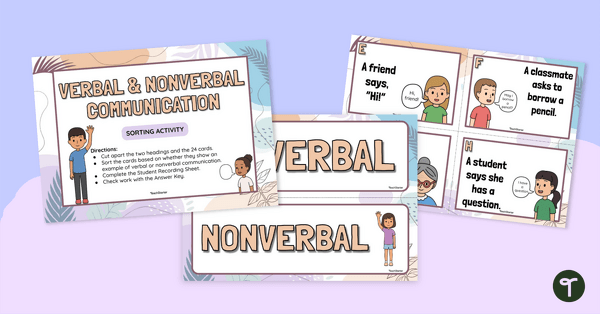
Verbal and Nonverbal Communication Sorting Activity
Use this sorting activity with your First Grade and Second Grade students to practice differentiating between verbal and nonverbal communication methods.
- Plus Plan
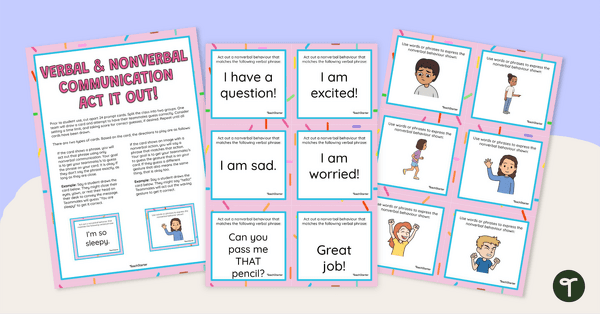
Verbal and Nonverbal Communication Act It Out Game
Use this active learning game to allow students to practice communication verbally and nonverbally, and interpret different verbal and nonverbal messages.
- Plus Plan
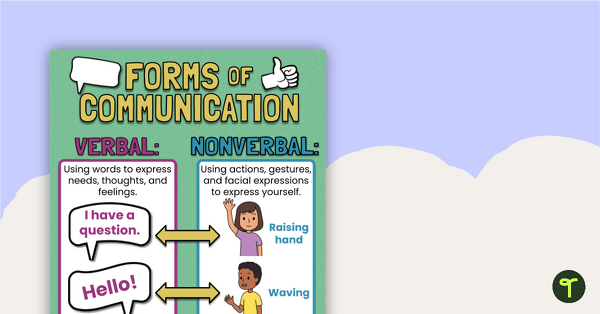
Verbal and Nonverbal Communication Poster
Teach your young students the key to communication by starting with the basics — the difference between verbal and nonverbal communication methods.
- Plus Plan
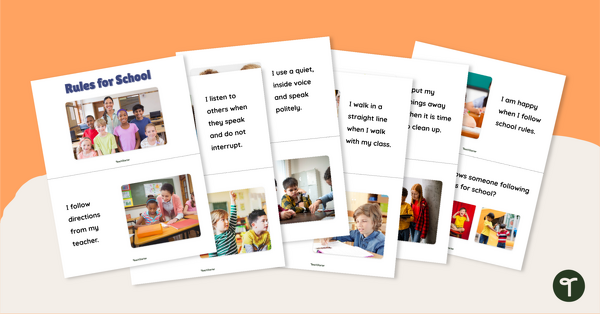
Rules for School Mini-Book
Remind students about appropriate behaviors at school with this printable mini-book.
- Plus Plan
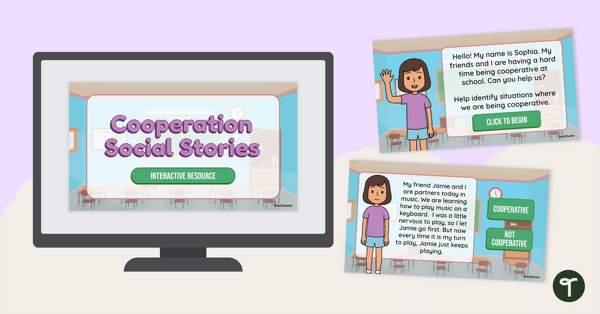
Cooperation Social Stories - Interactive Activity
Help your students differentiate between uncooperative and cooperative behavior in social situations with an interactive activity.
- Plus Plan
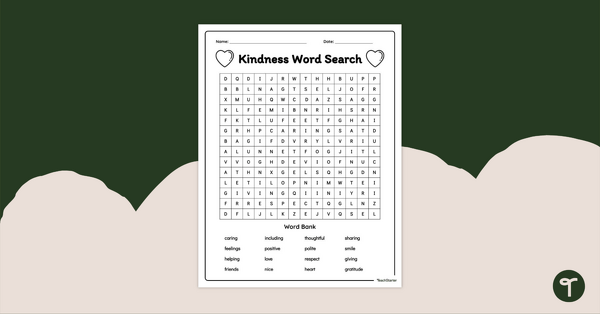
Kindness Word Search
Download a printable word search about kindness for elementary school to explore this important aspect of social awareness with your students.
- Free Plan
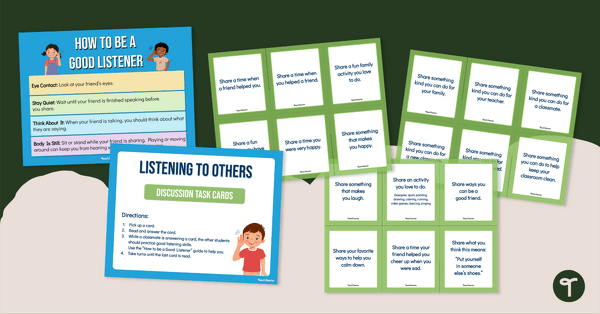
Listening to Others – Discussion Task Cards and Poster
Give students the opportunity to work on their listening skills and learn what it means to be a good listener with this set of 42 discussion cards and classroom poster.
- Plus Plan
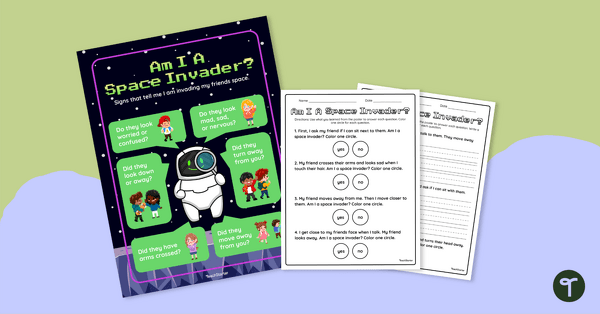
Am I A Space Invader? Poster and Worksheet Set
Learn about personal space with this space invader poster and worksheet set.
- Plus Plan
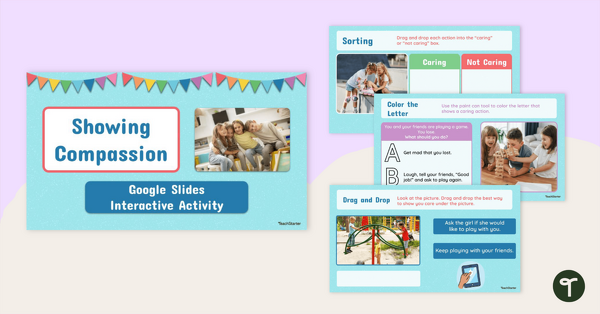
Showing Compassion Google Slides Interactive Activity
Help students understand the importance of caring for others and how to appropriately respond with this interactive activity.
- Plus Plan
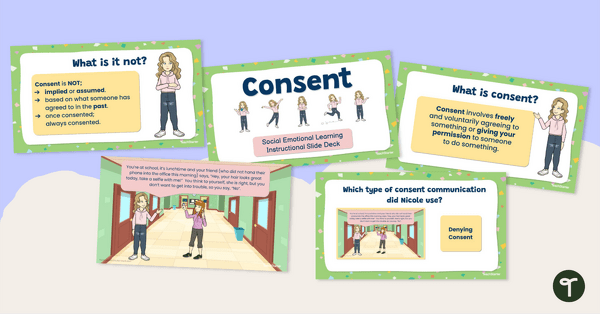
Understanding and Communicating Consent — Teaching Slides
Introduce your middle school students to the concept of consent, the steps of seeking, giving, or denying consent, and how to communicate in familiar scenarios.
- Plus Plan
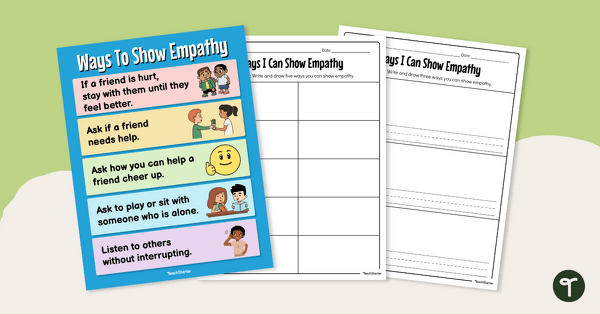
'Ways To Show Empathy' Poster and Worksheet
Use this printable empathy for kids poster and worksheet to teach your students how to share the feelings of others.
- Plus Plan

Social Cues Poster & Worksheet
Teach your students about different social cues with this printable poster and worksheet.
- Plus Plan
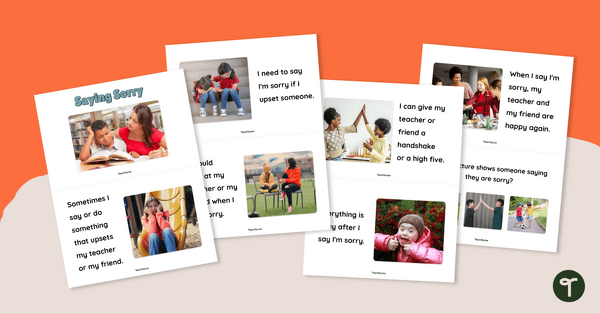
Saying Sorry Mini-Book
Learn how to develop strategies and skills for saying sorry to others with this printable mini-book.
- Plus Plan
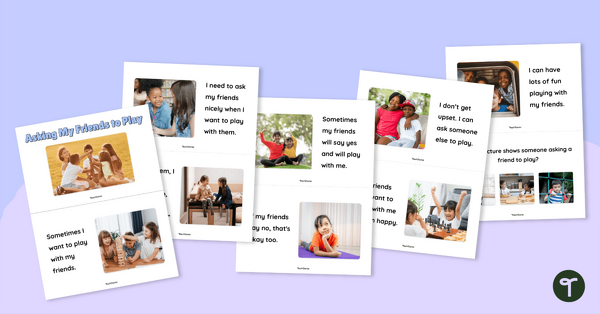
Asking My Friends to Play Mini-Book
Learn about appropriate social skills when asking friends to play with this printable mini-book.
- Plus Plan
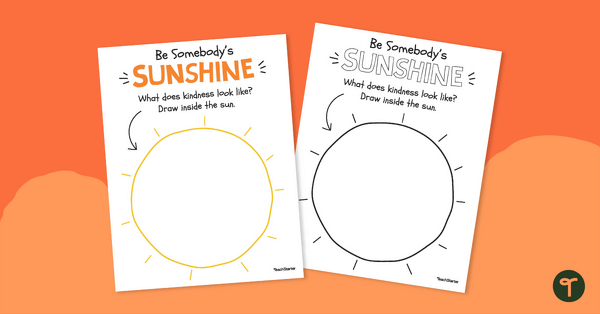
Be Somebody's Sunshine Template
Reflect on what kindness looks like with this student template.
- Plus Plan

Sprinkle Kindness Activity Book Template
Encourage students to write about ways to be kind to people and the planet with a printable sprinkle kindness activity book.
- Plus Plan
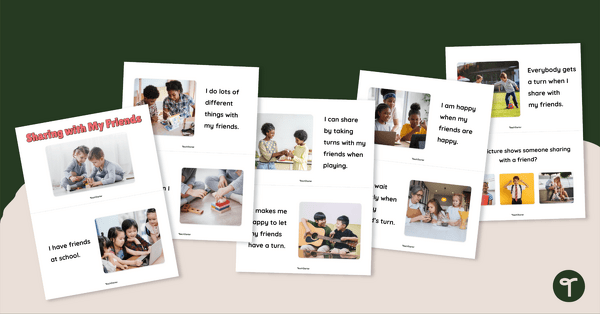
Sharing with My Friends – Mini-Book
Develop skills and strategies for sharing with others with this printable mini-book.
- Plus Plan
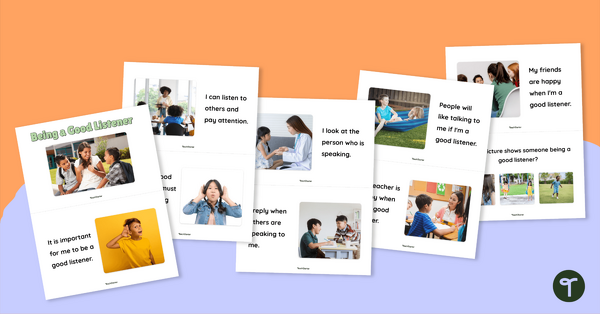
Being a Good Listener – Mini-Book
Develop and reinforce appropriate listening skills with this printable social skills mini-book.
- Plus Plan
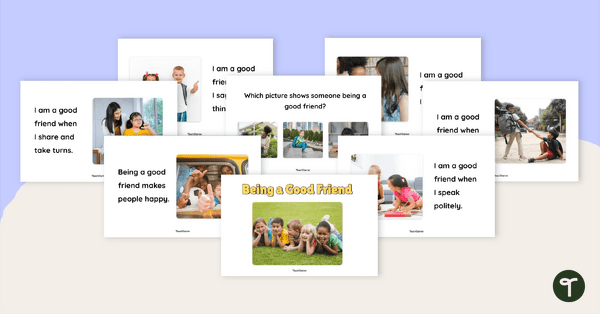
Being a Good Friend – Mini-Book
Learn how to be a good friend and maintain relationships with this printable social skills book.
- Plus Plan
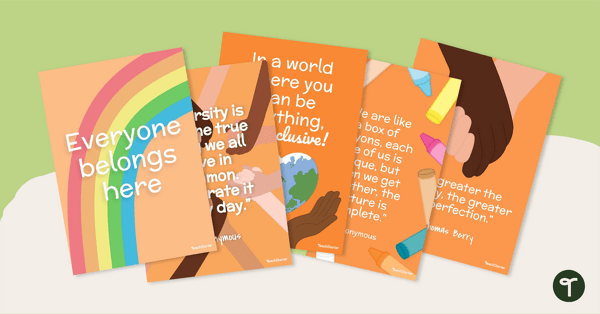
Diversity and Inclusivity Quotes Poster Pack
Celebrate diversity and promote inclusivity in your classroom or school with a pack of posters.
- Plus Plan
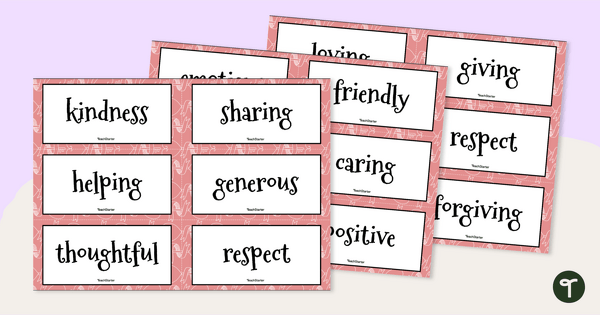
Kindness Words - Word Wall
Print a set of kindness word cards to use during your social-emotional learning lessons.
- Plus Plan
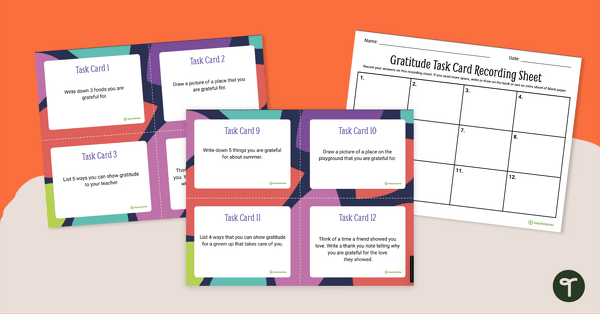
Gratitude Task Cards
Invite students to practice gratitude with this set of 12 task cards that get students to brainstorm what they are thankful for.
- Plus Plan
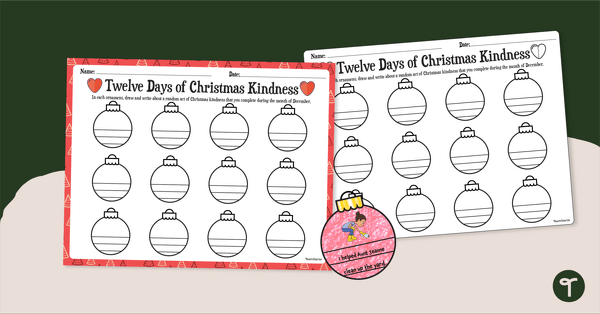
Twelve Days of Kindness – Christmas Challenge Worksheet
Challenge your students to commit 12 random acts of Christmas kindness with a printable kindness activity for elementary school students.
- Free Plan
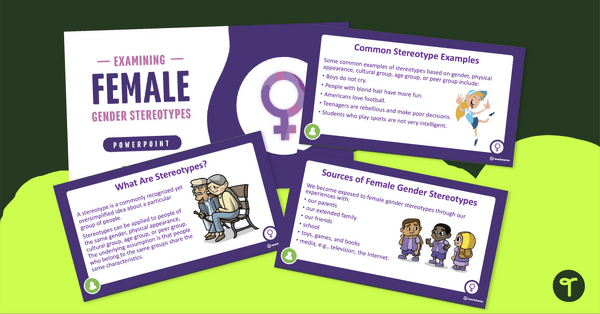
Examining Female Gender Stereotypes PowerPoint
A 14 slide editable PowerPoint template to use when examining female gender stereotypes with your students.
- Plus Plan
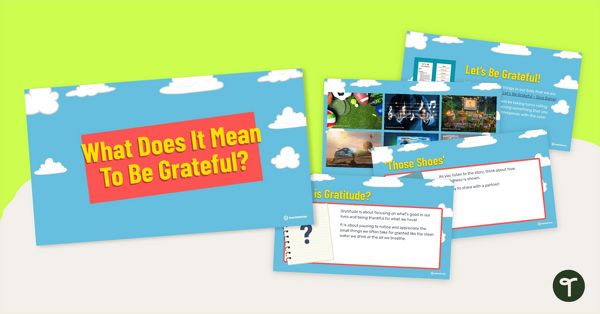
What Does It Mean To Be Grateful? Teaching Slide Deck
Use this editable teaching slide deck when teaching your students about gratitude.
- Social Awareness Templates
- Social Awareness Posters
- Social Awareness Worksheets
- Social Awareness Games
- Social Awareness for Pre-K
- Social Awareness for Kindergarten
- Social Awareness for 1st Grade
- Social Awareness for 2nd Grade
- Social Awareness for 3rd Grade
- Social Awareness for 4th Grade
- Social Awareness for 5th Grade
- Social Awareness for 6th Grade